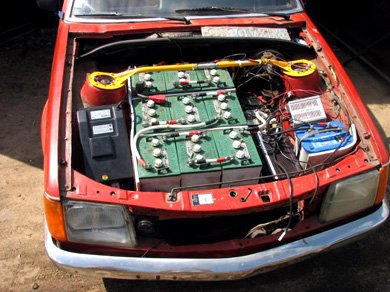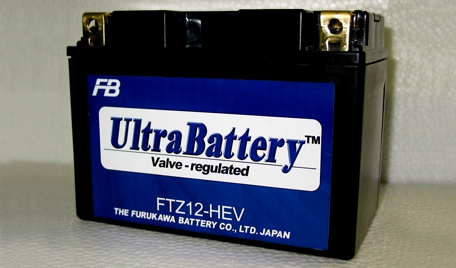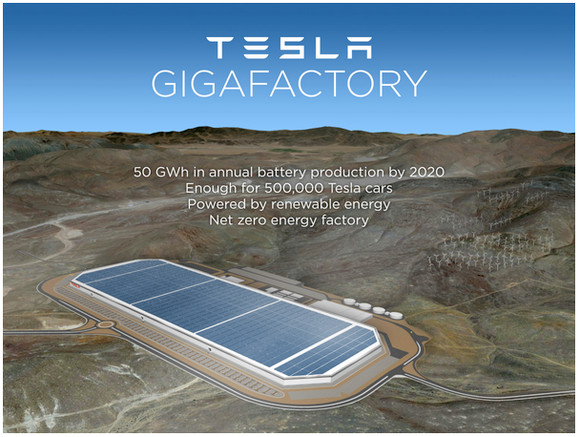Summarized by Walter Sorochan
Monday, January 22, 2007; Updated November 13, 2021.
The real inexpensive and safe electric storage battery is still a dream and hope. Although today we have a technology to store fuel for electric vehicles [ EV ] using lithium, the element lithium as an element is in short supply, making such a battery expensive. Lithium-ion technology is 20 years old and the cost of such batteries is coming down in cost largely due to mass production and use of better technology. Related to solving the high cost of lithium-ion battery is the increasing high cost of green electricity that has also been rising steeply since 2000, with average retail prices in the United States up nearly 50 percent. The makers of electric cars have stalled mass production, mainly due to lack of a good storage battery.
This article briefly reviews the technology available for storing electricity in a battery to provide fuel for electric vehicles [EV].
 For the past 20 years, hybrids and electronic vehicles [ EV ] have distracted from finding a real solution to finding an inexpensive solution to using batteries to store electric energy. For example, there was a focus on batteries that took up a lot of space, as illustrated in the photo on the right. Other battery issues abounded, such as how many miles one travels before needing to charge the depleted battery?
For the past 20 years, hybrids and electronic vehicles [ EV ] have distracted from finding a real solution to finding an inexpensive solution to using batteries to store electric energy. For example, there was a focus on batteries that took up a lot of space, as illustrated in the photo on the right. Other battery issues abounded, such as how many miles one travels before needing to charge the depleted battery?
 The older lead-acid starter batteries have been replaced by much lighter Lithium-ion batteries.
The older lead-acid starter batteries have been replaced by much lighter Lithium-ion batteries.
Failed Tech Battery
A Texas company in 2011 raised hopes of solving the electric storage battery. Unfortunately, as of March 13, 2016, Dick Weir and his EESTOR of Austin, Texas, has been unable to deliver working ultra-capacitor batteries.
Much like capacitors, ultra-capacitors store energy in an electrical field between two closely spaced conductors, or plates. When voltage is applied, ultra-capacitors release quick jolts of electricity and to absorb this energy just as fast.
Alternatives to lithium ion battery
The big unknown is a new technology that will create an improved electrical storage battery in the near future and possibly displace the lithium ion battery. Naam: Energy storage 2015 Many energy storage technologies are in the developmental stage with the hope to be far more resilient than lithium-ion:
 Tesla Motors in USA and battery company: Make more less expensive lithium-ion [Li-ion] batteries.
Tesla is not really a car company although it has built electric cars. It’s a battery company that happens to make electric cars. The battery is expected to employ
the lithium-ion technology used in Tesla's Model S vehicles.
By 2020, the Gigafactory in Sparks, Nevada, battery plant, will reach full capacity and produce more lithium ion batteries annually than were produced worldwide in 2013. Tesla claims that it will build batteries for not just cars and houses, but for electronics such as laptops and cell phones. The goal of the Gigafactory is to make batteries so cheap that electric cars can compete with conventional gasoline powered cars on price.
Tesla Motors in USA and battery company: Make more less expensive lithium-ion [Li-ion] batteries.
Tesla is not really a car company although it has built electric cars. It’s a battery company that happens to make electric cars. The battery is expected to employ
the lithium-ion technology used in Tesla's Model S vehicles.
By 2020, the Gigafactory in Sparks, Nevada, battery plant, will reach full capacity and produce more lithium ion batteries annually than were produced worldwide in 2013. Tesla claims that it will build batteries for not just cars and houses, but for electronics such as laptops and cell phones. The goal of the Gigafactory is to make batteries so cheap that electric cars can compete with conventional gasoline powered cars on price.
This Li-ion battery suffers from fairly rapid degradation; can short circuit, explode or catch fire. Getting 1,000 cycles out of a li-ion battery with full depth of discharge (draining it completely) is ambitious. Tesla’s PowerWall battery is warranted for 10 years, or 3,650 cycles, which appears to be possible only because the battery is never fully drained. What Tesla sells as a 7kwh battery is actually a 10kwh battery that never allows the final 3kwh to be drained. Naam: Energy storage 2015
In summary, an inexpensive and working electric energy storage battery for electric vehicles is a hopeful dream. We may have electronic cars using electronic batteries today and in the next few years, but these lack real practicality.
References:
Hays Brooks, "Fool's gold battery' developed as alternative to lithium ion," Science News, Nov. 13, 2015. Hays: Fool's gold battery 2015
Naam Ramez, "Why Energy Storage is About to Get Big – and Cheap." April 14, 2015. Naam: Energy storage 2015
Naam Ramez, "How Cheap Can Energy Storage Get? Pretty Darn Cheap." October 14, 2015 Naam: Energy storage costs 2015
Wikipedia, "Super-Capacitators." Wiki: Super-Capacitators